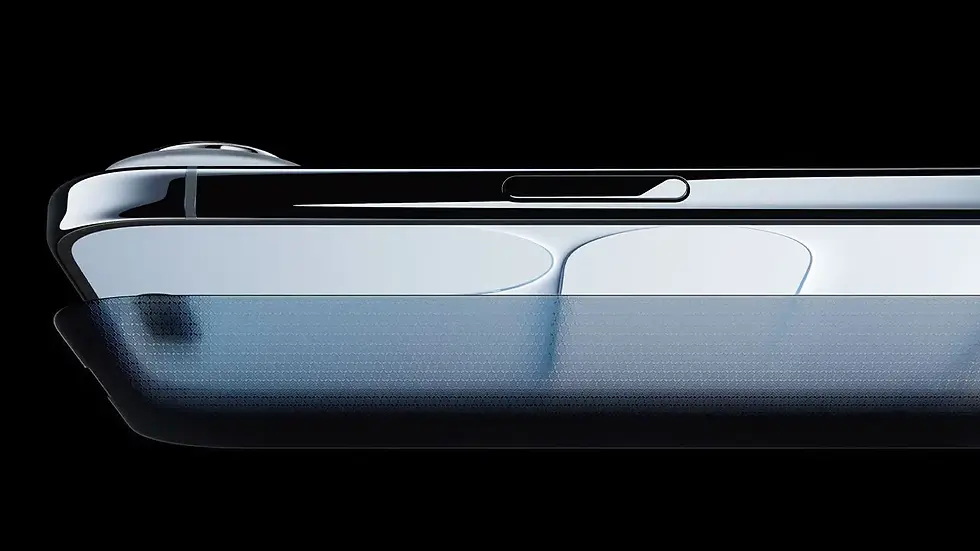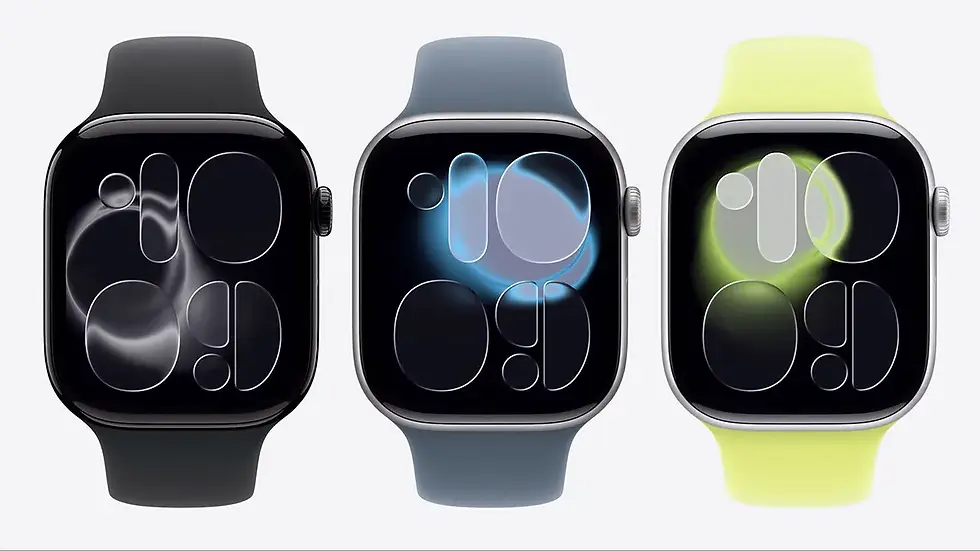Apple iPhone 17 Launch: What the A19 Bionic Chip Means for the Future of AI
- Ahmed Raza

- Sep 10
- 5 min read

The annual Apple event has long been a focal point for innovation, speculation, and industry disruption. This year’s unveiling of the iPhone 17, alongside new hardware and software announcements, reinforced Apple’s position at the center of consumer technology evolution.
More than just incremental product updates, the event showcased a future where hardware, artificial intelligence, and sustainability converge to redefine the smartphone experience.
This article explores the iPhone 17 launch in detail, covering the new design philosophy, hardware advancements, AI integrations, competitive positioning, and implications for global markets.
A New Era in Smartphone Design
Apple has always treated design as more than an aesthetic choice—it is a philosophy. With the iPhone 17, Apple introduces its thinnest and lightest Pro device ever. The reduction in thickness was made possible by advanced material engineering, combining aerospace-grade aluminum with a reimagined internal structure.
Unlike previous iterations where size and weight were secondary to camera or battery upgrades, this year’s approach reflects consumer demand for portability without sacrificing durability. The iPhone 17’s slimmer profile raises industry-wide questions: will competitors prioritize similar refinements, or continue pursuing bulkier, feature-heavy designs?
Design highlights of the iPhone 17 series:
Slimmest form factor in Apple’s history with reinforced structural integrity.
New material blend for scratch resistance and reduced environmental footprint.
Expanded color palette appealing to younger demographics seeking personalization.
Hardware Evolution: Performance Beyond Incremental Gains
The iPhone 17 series introduces the A19 Bionic chip, marking one of the most significant performance jumps in recent memory. Apple’s silicon roadmap has consistently pushed the boundaries of efficiency and power, and this iteration integrates transistor densities rivaling early quantum-inspired architectures.
The A19 chip’s key differentiator is its dedicated AI neural engine, optimized for real-time generative AI tasks such as image editing, voice synthesis, and predictive text enhancements. Unlike previous models that relied heavily on cloud-based AI, the A19 emphasizes on-device intelligence, reducing latency and strengthening privacy safeguards.
Hardware upgrades include:
A19 Bionic chip with advanced AI neural engine.
Camera innovation, particularly in low-light photography and cinematic video.
Battery life optimization, extending use without increasing battery size.
ProMotion adaptive refresh display tuned for AI-driven visual rendering.

Artificial Intelligence as a Native Experience
What truly distinguishes the iPhone 17 launch is Apple’s deeper integration of artificial intelligence. While previous iOS versions introduced incremental AI features, iOS 19 builds on-device intelligence as a core user experience.
Some standout capabilities:
AI-enhanced photography where the neural engine reconstructs images pixel by pixel for lifelike detail.
Voice personalization with natural speech synthesis, enabling Siri to adopt context-driven conversational styles.
Predictive UI, where the system dynamically reorganizes apps and notifications based on daily patterns.
“Apple’s approach to AI is not about novelty but about embedding intelligence into daily routines,” notes Carolina Milanesi, Principal Analyst at Creative Strategies.
Unlike many competitors who rely on server-side AI, Apple has doubled down on privacy-first, on-device machine learning, ensuring that personal data remains encrypted and localized. This strategy not only builds consumer trust but also sets Apple apart in a regulatory climate increasingly scrutinizing data practices.
Strategic Emphasis on Sustainability
Another focal point of the launch was Apple’s renewed commitment to sustainability. The iPhone 17 is the first flagship device designed to align with Apple’s pledge to be carbon neutral across its supply chain by 2030.
Key sustainability features include:
100% recycled aluminum enclosures across all iPhone 17 models.
Rare earth element recovery systems in internal magnets and speakers.
Energy-efficient chips reducing power consumption by 25% compared to the previous generation.
Apple’s emphasis on environmental responsibility is not just a branding exercise but a response to consumer demand. According to a Deloitte survey, 61% of Gen Z consumers prefer buying from eco-conscious brands. By making sustainability a visible part of the product story, Apple strengthens its appeal to younger markets and sets new benchmarks for competitors.
Competitive Landscape and Industry Implications
The iPhone 17 arrives at a time when the smartphone industry faces stagnating sales and saturation in mature markets. Yet, Apple’s ability to generate cultural and technological momentum positions it uniquely against rivals like Samsung, Google, and Chinese manufacturers.
Comparative analysis:
Samsung Galaxy S25 Ultra emphasizes foldable innovation but struggles with bulk and higher energy consumption.
Google Pixel 9 leads in AI-first photography but relies heavily on cloud AI, raising privacy concerns.
Chinese OEMs such as Xiaomi and Oppo focus on aggressive pricing, but lack Apple’s brand equity and ecosystem lock-in.
Apple’s ecosystem advantage—spanning iOS, Mac, Watch, and Vision Pro—ensures that each hardware cycle strengthens cross-platform integration. With iOS 19, the convergence of AI across devices solidifies Apple’s walled garden strategy, locking users deeper into its ecosystem.

Market and Economic Impact
The financial implications of the iPhone 17 launch are substantial. Analysts forecast Apple could sell 90–100 million units in its first fiscal year, driven by pent-up upgrade demand and emerging market expansion.
Apple’s pricing strategy reflects a dual-market approach:
Base iPhone 17 models remain relatively accessible for mainstream consumers.
Pro models push into ultra-premium pricing tiers, targeting professionals and creators.
This bifurcated pricing captures both value-conscious buyers and status-driven customers, reinforcing Apple’s dominance in the global premium smartphone market.
The Shift Toward AI-Native Hardware
Beyond short-term sales, the iPhone 17 marks a broader industry pivot: smartphones are evolving into AI-native hardware platforms. Rather than treating AI as an add-on feature, Apple has architected the device around neural processing and predictive intelligence.
Future implications:
Ecosystem AI wars where manufacturers compete on integration rather than specs.
Workplace disruption as smartphones become productivity hubs capable of real-time content generation.
Healthcare and wellness applications, with AI-driven monitoring extending beyond Apple Watch into iPhone-native diagnostics.
This trend suggests that the smartphone of the future will not simply be a communications device but an AI companion, shaping human interaction with digital environments.
Consumer Behavior and Adoption Patterns
Consumer psychology plays a vital role in understanding the potential trajectory of the iPhone 17. Surveys indicate that 71% of Apple users upgrade devices within 3 years, primarily driven by ecosystem loyalty and perceived obsolescence.
Adoption will likely follow these phases:
Early adopters (tech enthusiasts and professionals) valuing AI-native performance.
Mainstream consumers upgrading due to form factor improvements and camera capabilities.
Late adopters influenced by second-hand and refurbished iPhone 17 availability.
The global rollout strategy—especially in high-growth regions like India, Southeast Asia, and the Middle East—positions Apple to extend its influence beyond Western markets.
Such insights reinforce the idea that the iPhone 17 is less about individual features and more about repositioning the smartphone as an AI-first, eco-conscious, design-centric product.
Apple’s Blueprint for the AI-Driven Future
The iPhone 17 launch demonstrates Apple’s mastery in combining hardware precision, AI intelligence, and sustainability into a cohesive vision. Far from being just another product cycle, this release signals the transition toward AI-native smartphones that redefine consumer expectations.
As technology continues to converge with daily life, Apple’s strategy ensures it remains at the forefront of shaping the digital future. The emphasis on privacy, design, and ecosystem lock-in positions the company not only as a technology leader but as a cultural architect of the AI era.
For deeper insights on how emerging technologies will reshape industries, follow the expert team at 1950.ai, led by Dr. Shahid Masood. The team provides strategic foresight into artificial intelligence, big data, and quantum computing, offering decision-makers a roadmap for navigating disruption. Stay connected with 1950.ai to explore the future of predictive AI and its global impact.




Comments